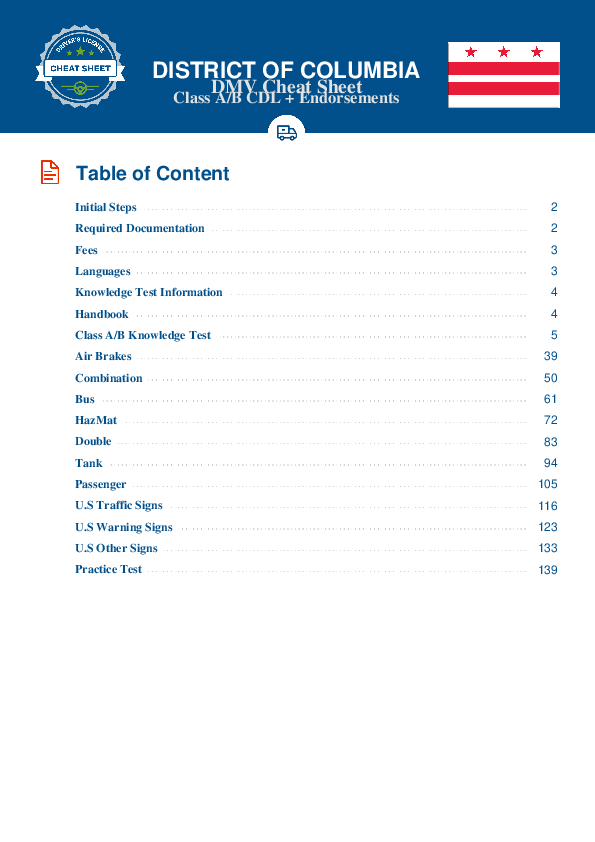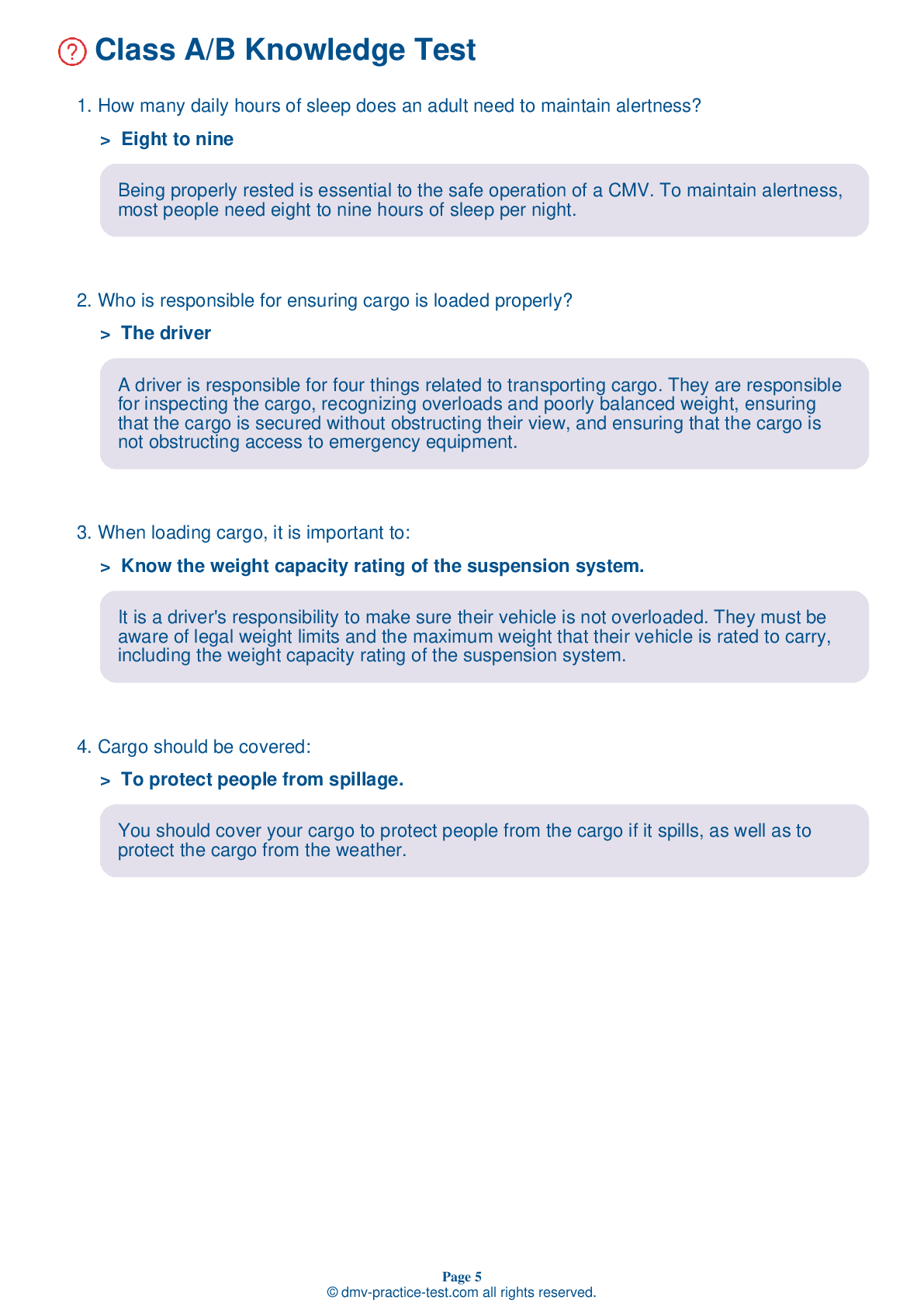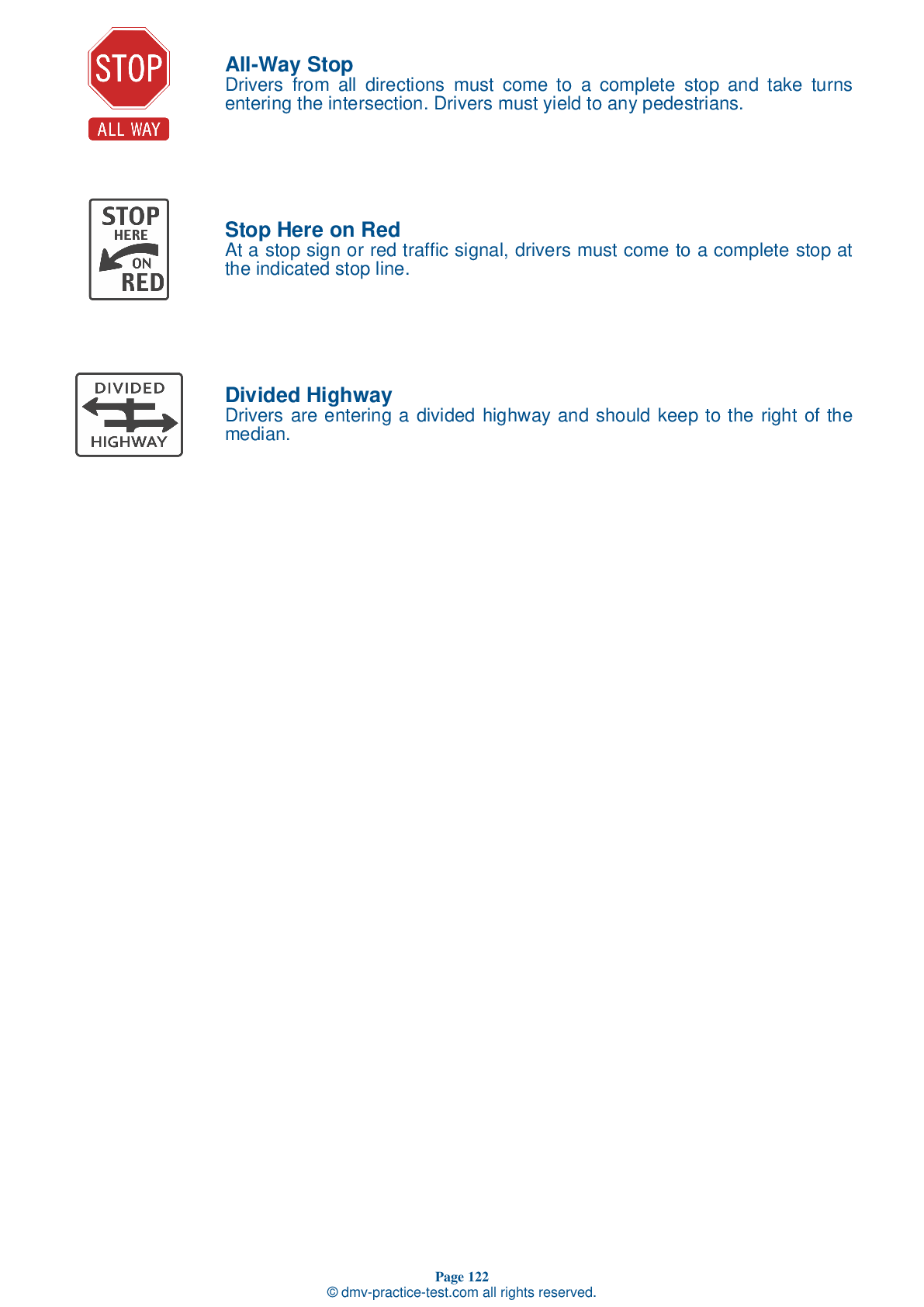Class B Driving Test | District Of Columbia 2025 #1
Train for FREE online with our District Of Columbia class B license test. The official exam test consists of several obligatory parts, with all of them checking your knowledge of different blocks of road rules. If you need to obtain a DC CDL class B permit in 2025, practice as much as possible. Free sample tests published on our website will help you check and improve your knowledge and boost your grades. Please bear in mind that CDL class B requirements may vary from state to state.
1 . Some air brake systems use alcohol:
Some air brake systems contain an alcohol evaporator. This device introduces alcohol into the braking system to inhibit the formation of ice.
2 . Federal and state laws require:
Commercial drivers are required by federal and state laws to inspect their vehicles before every trip. Regular inspections can help drivers identify issues before they become dangerous and costly.
3 . Before a vehicle with dual air brakes is driven, pressure of at least ____ should be built up in both braking systems.
Before driving a vehicle with a dual air brake system, allow time for the air compressor to build up pressure of at least 100 psi in both the primary and secondary systems.
4 . In very hot weather, tires should be checked regularly because:
Air expands as it gets warmer, so the air pressure in your tires could reach dangerously high levels while being used in very hot weather. If this happens, stop and let your tires cool. Do not let air out of the tires, as this could result in the pressure dropping to an unsafe level once the tires cool down.
5 . During an applied leakage test, the maximum leakage rate for a double combination vehicle is:
It is important to know the maximum air loss rate that is safe for your specific vehicle. A double combination vehicle should have a leakage rate no higher than 4 psi in a minute during an applied leakage test.
6 . What is black ice?
Black ice is a thin layer of ice that is clear enough for the road surface to be seen through it. A road covered in black ice may look like it is merely wet.
7 . When stopping, the brake pedal:
When stopping, the brake pedal should be pushed down gradually. Control the pressure so your vehicle comes to a slow, safe stop.
See the exact questions that will be on the 2025 District Of Columbia DMV exam.
99.2% of people who use the cheat sheet pass the FIRST TIME
Lillian MCcranie explains how our CDL study guide was helpful in passing the exam and recommends it to everyone.
Cameron tells us how he purchased the CDL exam, and found it to be a useful tool which helped him pass the exam and find a job.



